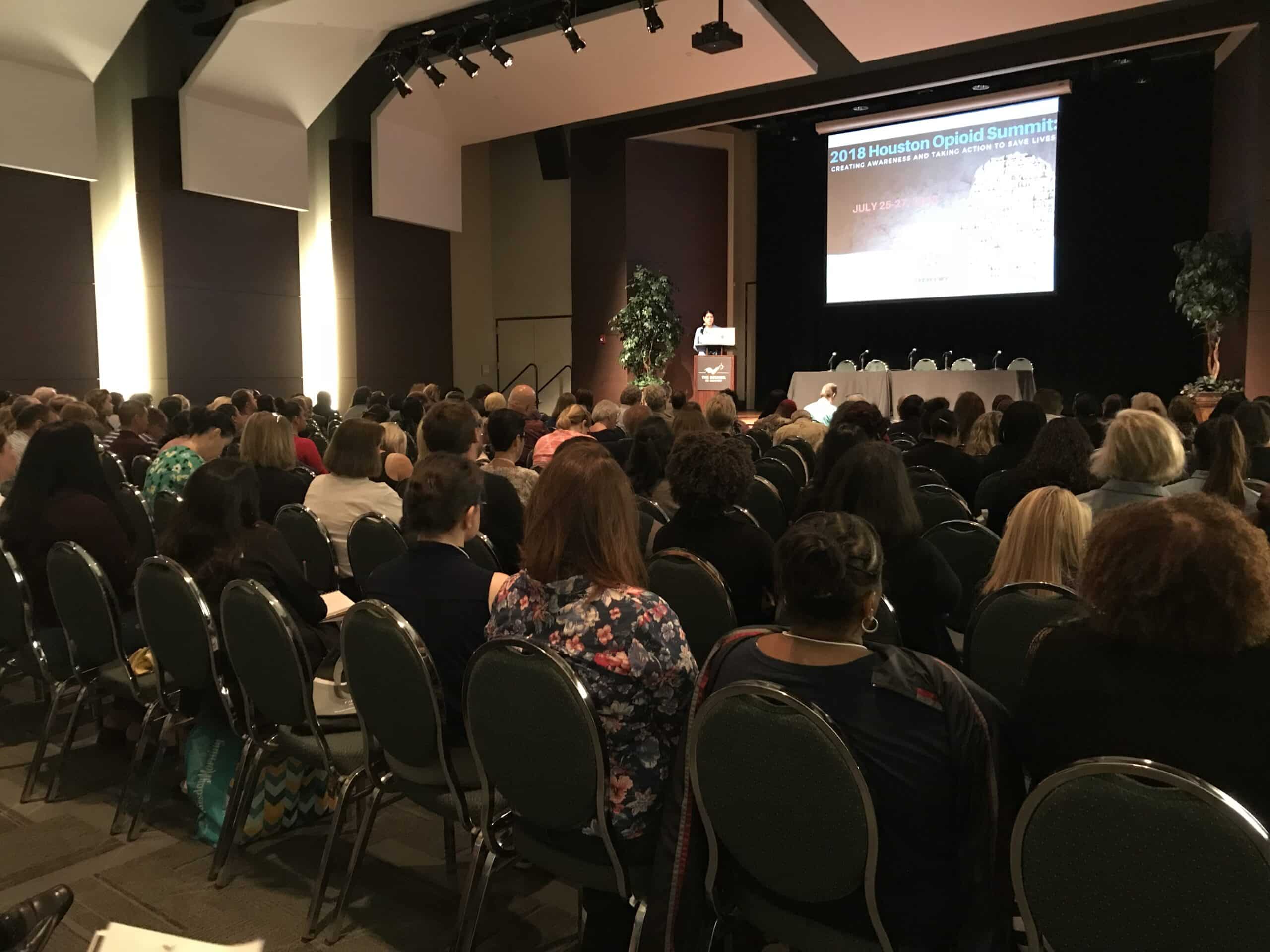
As The Council’s inaugural Opioid Summit and the first to bring together all of the major stakeholders currently battling the crisis, the Summit provided a broad range of presentations from experts in their fields. Topics included: An Overview of the Crisis in Houston; The Role of the Faith Based Community; Collaboration for Opioid Prevention; Advocacy; Therapeutic Treatment Courts; Medication Assisted Treatment; Prescription Drug Monitoring Programs’ Impact; Media’s Role & Responsibility in the Crisis; and the Impact of Addiction on Mothers & Children.
In a special closing session Friday afternoon, a full auditorium at The Council’s Hamill Foundation Conference Center heard the personal perspectives of three people whose lives were forever touched by the opioid crisis. Moderated by Khambrel Marshall, from the Opioid Summit’s media partner KPRC Channel 2, Maureen Wittels and Jim Hood told of losing their respective sons to opioid overdose. Ex-NFL star Randy Grimes shared about his 20-year opioid addiction and nine years of sobriety. The poignant discussion brought home the personal tragedy and suffering, but also provided a message of hope that Opioid Summit participants could take with them as they work together to end the scourge.
Though speaker after speaker at the Opioid Summit alluded to the prospects of stopping the opioid epidemic, most agreed it would be a long, hard battle. The Council on Recovery remains committed to leading that battle with prevention, education, treatment, and recovery services. Future Opioid Summits to be hosted by The Council will meet the opioid epidemic where it is and will again draw together the many sectors to create understanding and awareness, and take action to save lives.
